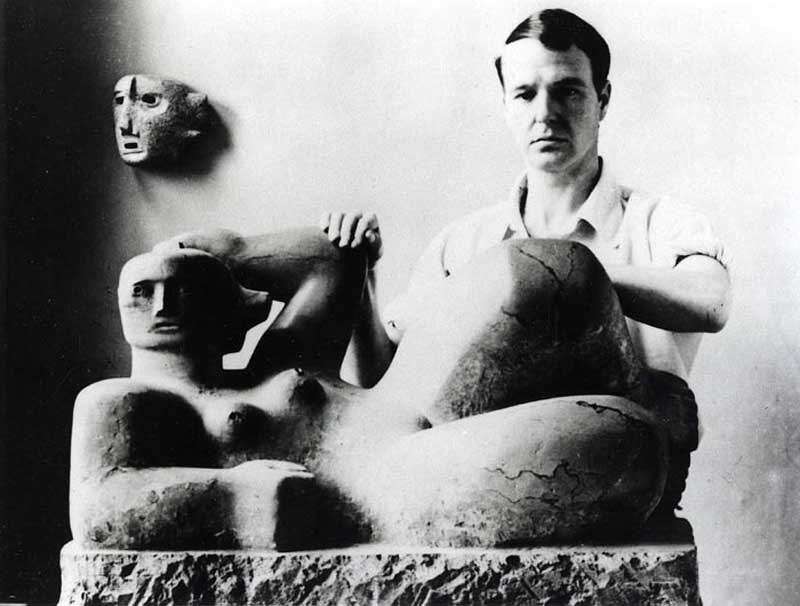Born in Castleford, Yorkshire, Moore first trained as a teacher. Following demobilization at the end of the First World War he enrolled at the Leeds School of Art and from there he went to the Royal College of Art. Henry Moore is now widely acknowledged as perhaps the greatest sculptor of the twentieth century, but he was also a prolific draughtsman and printmaker. He was an outstanding sculptural draughtsman with a style recognizably his own. His drawings done during the Second World War of the London Tube shelters are among the most poignant records that exist of the effects of a bombing war on the civilian population. Between 1926 and 1939 he taught at the Chelsea School of Art and his first solo exhibition was staged in London in 1928. He joined the London Group in 1930 and remained an active member of the Group during the early 1930s. From 1932 to 1935 he was an exhibiting member of the 7 & 5 Society and in 1933 he exhibited with the advanced Unit One. Moore was also involved in the International Surrealists' Exhibition in 1936 and 1938. His preoccupation throughout his life was with the human figure: 'The human figure is what interests me most deeply, but I have found principles of form and rhythm from the study of natural objects such as pebbles, rocks, bones, trees and plants.' During the Second World War he served as an Official War Artist. Two retrospectives of his work were held by the Tate Gallery in 1951 and in 1968. He won the Sculpture Prize at the Venice Biennale in 1948, and at Sao Paulo in 1953.
